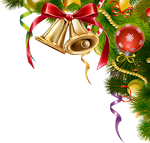In the ever-evolving world of SEO, image link building has emerged as a powerful and effective strategy to improve search engine rankings. Harnessing the potential of visuals, this method generates backlinks over time, providing a valuable boost to website visibility. But what exactly is image link building? Simply put, it involves utilizing various types of images to attract backlinks, such as high-quality visuals, infographics, logos, and product photos. By optimizing these images for search engines through techniques like keyword research and file optimization, brands can increase their online presence and enhance their backlink profile. This article delves into the intricacies of image link building, providing insights into the types of images that attract backlinks and offering practical tips for optimizing images for search engines. So, let’s embark on a journey to unravel the secrets of image link building and unlock the potential it holds for your SEO endeavors.
Key Takeaways
- Image link building is a hands-off method of generating backlinks over time, which can help improve SEO by attracting organic links.
- Types of images that can attract backlinks include high-quality images on your website, infographics, logos, badges, banners, product photos, visual statistic graphs, and maps from strong domains.
- Keyword research is essential for optimizing images, and tools like Google Trends, Answerthepublic, and Keywordtool.io can be used for narrowing keyword searches and finding relevant platforms for link building.
- Creating unique images using online editors or Photoshop, optimizing images for search engines through alt text, title, and image filename optimization, compression, captions, and SRCSET attribute, and offering value through informative and engaging image content are important for improving brand value and backlink profile.
What is image link building?
Image link building is a hands-off method of generating backlinks over time, which can improve SEO by attracting organic links. It involves creating and optimizing various types of high-quality images on your website, such as infographics, logos, badges, banners, product photos, visual statistic graphs, and maps from strong domains. The advantages of image link building are that it earns organic links over time and helps improve search engine rankings.
To ensure successful image link building, it is important to follow best practices, such as conducting keyword research, creating unique images, optimizing images for search engines, offering value through informative and engaging image content, using embed codes for easy linking, and utilizing manual email outreach to bloggers for building backlinks. By implementing these strategies, one can enhance their brand value and backlink profile.
Types of images for backlinks
Infographics are highly effective in attracting backlinks, as they are 30 times more likely to be read than plain text. Infographic marketing offers numerous benefits in SEO. By presenting information in a visually appealing and easily digestible format, infographics capture the attention of users and encourage them to share and link back to the content.
This not only improves the website’s visibility but also enhances its authority and credibility. Infographics can cover a wide range of topics, from data-driven statistics to step-by-step guides and comparisons. They provide a unique opportunity to present complex information in a simplified manner, making it accessible to a broader audience. Additionally, infographics can be shared across various platforms, including social media, blogs, and industry websites, further increasing their reach and potential for backlinks. Incorporating infographics into the image link building strategy can significantly contribute to improving SEO and generating organic backlinks.
Optimizing images for search engines
Optimizing images for search engines involves implementing various techniques such as alt text, title, and image filename optimization, compression for optimal file size, captions to enhance user experience and reduce bounce rate, and the SRCSET attribute for responsive images. When it comes to image file formats, it is recommended to use JPEG for photographs and PNG for images with transparency.
Additionally, it is important to follow image SEO best practices by using descriptive and relevant alt text that accurately describes the image, optimizing the image filename with relevant keywords, and including captions that provide additional context. Compressing images can help reduce file size without sacrificing quality, improving page load times. Lastly, utilizing the SRCSET attribute allows for the delivery of different images based on the device’s screen size, ensuring an optimal viewing experience.




